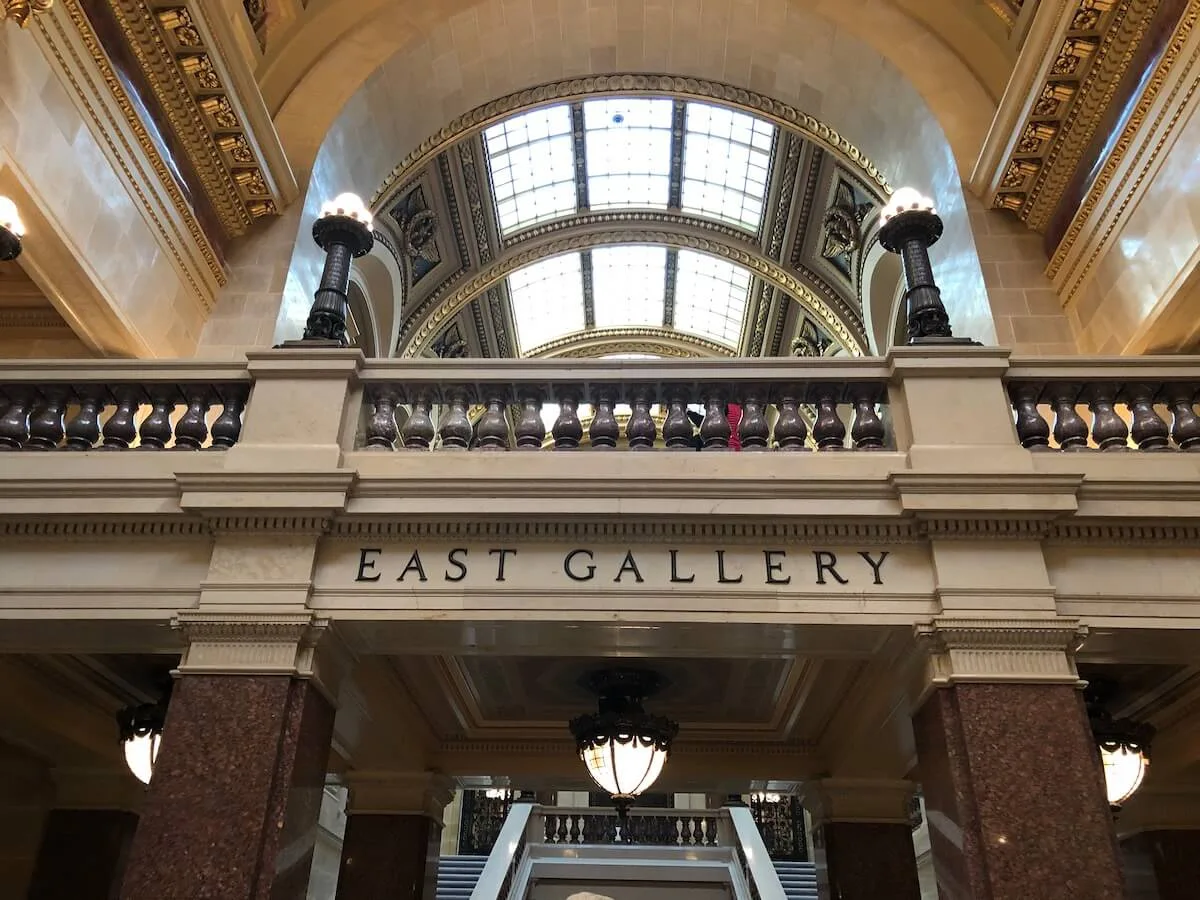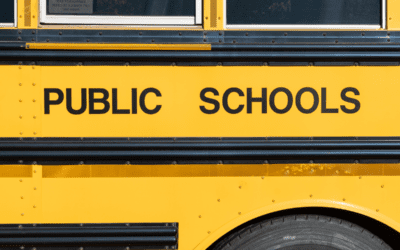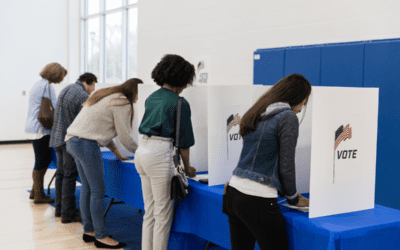
#image_title
Evers makes $2.4 billion in capital budget recommendations that the Legislature will subtract, add to, or modify.
An innovation center in Kenosha that is part of Gov. Tony Evers’ proposed capital budget to address statewide building needs is among the smaller spending initiatives in the proposal, but the project could have a big impact on boosting the city’s economic development efforts.
The center, located on the former site of an automobile factory, would receive $9.75 million under Evers’ proposed budget. Rep. Tod Ohnstad (D-Kenosha) said the center will help the city and the state at large attract and maintain young workers and new businesses, and provide an anchor for the surrounding neighborhoods that took a hit when the factory closed in 2010.
“The idea is to bring the neighborhood up,” Ohnstad said.
Plans for the innovation center date to at least 2019, when city officials first announced plans to turn the site into a technology hub. It would also house education, workforce training, and business development with a focus on STEM (science, technology, engineering, and math) jobs for younger demographics. The nearly $10 million allocation from Evers’ budget proposal would cover about half the cost of the innovation center, which itself is planned to be surrounded by an ambitious $1 billion neighborhood project, including a STEM-focused high school and new housing.
Earlier: Evers Outlines Top Priorities in Budget Address to the Legislature
Funding for the Kenosha project is part of Gov. Tony Evers’ proposed $2.38 billion capital budget he introduced on Feb. 22 that includes initiatives in 31 of Wisconsin’s 72 counties. About $1 billion of the budget would go to projects on University of Wisconsin System campuses, including $150 million to replace UW-Madison’s Computer Aided Engineering facility.
Evers’ plan also proposes $163 million for a new state office building in Milwaukee, and $45 million for a juvenile correctional facility there. A request for the Milwaukee facility was denied a year ago by GOP lawmakers, and that is delaying the closure of the troubled Lincoln Hills and Copper Lake juvenile detention facilities.
It is uncertain which, if any, of Evers’ recommended capital projects will ultimately be included in the 2021-23 state budget currently being worked on by state lawmakers. Republicans who control the Legislature have said Evers’ proposal is too expensive, but they have spoken in favor of some of the initiatives.
Another of Evers’ proposals would put $40 million toward a new Milwaukee Public Museum. Directors of that facility announced last September that they had chosen a new site in downtown Milwaukee after planning the move for several years. The museum will be combined with the Betty Brinn Children’s Museum, which is also currently located downtown.
The current museum building is in such disrepair it has been in danger of losing accreditation, Wisconsin Public Radio reported.
A description of the new museum building in Evers’ budget recommendations suggests the new museum will shift to more of a statewide focus and be renamed to the Wisconsin Museum of Nature and Culture. Evers’ recommended budget allocation would cover about one-sixth of the total cost of the relocation and construction effort.
“This is the first of several milestones in the Capital Budget process, and we look forward to working with Governor Evers and the State Legislature to ensure the project remains in the budget, as every culture and corner of our state is reflected in the new museum,” Milwaukee Public Museum President and CEO Ellen Censky said in an emailed statement.
New construction and maintenance of existing structures at UW System schools make up the largest part of the proposed capital projects budget. In addition to numerous projects at UW-Madison, the proposal includes funding for a new $116.7 million science and technology innovation center at UW-River Falls, the $92.8 million Prairie Springs Science Building at UW-La Crosse, and a $96 million dorm to replace UW-Stevens Point’s Albertson Hall.
However, some projects seeking inclusion in the capital budget were not included in the current cycle. The second phase of money for a new science building at UW-Eau Claire is not part of Evers’ recommendations, even though $109 million was part of the previous capital budget. The project, which would include student medical research opportunities in conjunction with Mayo Clinic, is projected to cost $256 million, which would be the single most expensive building to be built in the UW System.
The new science building would replace the badly outdated Phillips Science Hall, built in 1963 and expanded in 1968.
UW-Eau Claire officials had hoped for funding for the remainder of the new science building in the 2021-23 budget cycle but understand the many competing needs across the UW System, said Jake Wrasse, legislative and community relations liaison for the university. Another project at UW-Eau Claire, a $3.26 million renovation of the Haas Art and Design Studio, is part of the proposed capital budget.
Design work on the new science hall between university and state officials continues, Wrasse said, noting UW-Eau Claire is “very pleased” to see funding for new science buildings at UW-La Crosse and UW-River Falls where existing facilities to be replaced are of similar age to Phillips Science Hall.
Ed Manydeeds, a UW System Board of Regents member from Eau Claire, noted that UW-Eau Claire has received state funding for numerous building projects in recent years. Some other building plans have been in the works for longer than the new science building at UW-Eau Claire, he said, and the state has many competing interests for capital budget funding.
“There are only so many projects that the Legislature is going to approve,” Manydeeds said.
Phillips Science Hall at UW-Eau Claire is badly in need of replacement. During a tour of the building Wednesday, Wrasse showed its cramped quarters that often force students to work in hallways or other spaces not designed for research. Lab equipment in some areas is covered with plastic to protect it from being damaged by water leaking through the roof. The building also lacks a fire suppression system and has an outdated air-handling system. A fire there last winter damaged student research projects.
Faculty and students work hard to overcome the building’s shortcomings, Wrasse said, but he hopes at some point in the future they can teach and learn in a modern facility.
“Good teaching can happen anywhere,” he said. “But the obstacles to that in this building, my goodness.”

Opinion: Many to thank in fair maps victory for Wisconsinites
On February 19, 2024, Governor Tony Evers signed into law new and fair state legislative maps, bringing hope for an end to over a decade of...

Opinion: Empowering educators: A call for negotiation rights in Wisconsin
This week marks “Public Schools Week,” highlighting the dedication of teachers, paras, custodians, secretaries and others who collaborate with...

Op-ed: Trump’s journey from hosting The Apprentice to being the biggest loser
Leading up to the 2016 election, Donald Trump crafted an image of himself as a successful businessman and a winner. But in reality, Trump has a long...

Not just abortion: IVF ruling next phase in the right’s war on reproductive freedom
Nearly two years after the US Supreme Court overturned Roe v. Wade, another court is using that ruling to go after one of the anti-abortion right’s...




